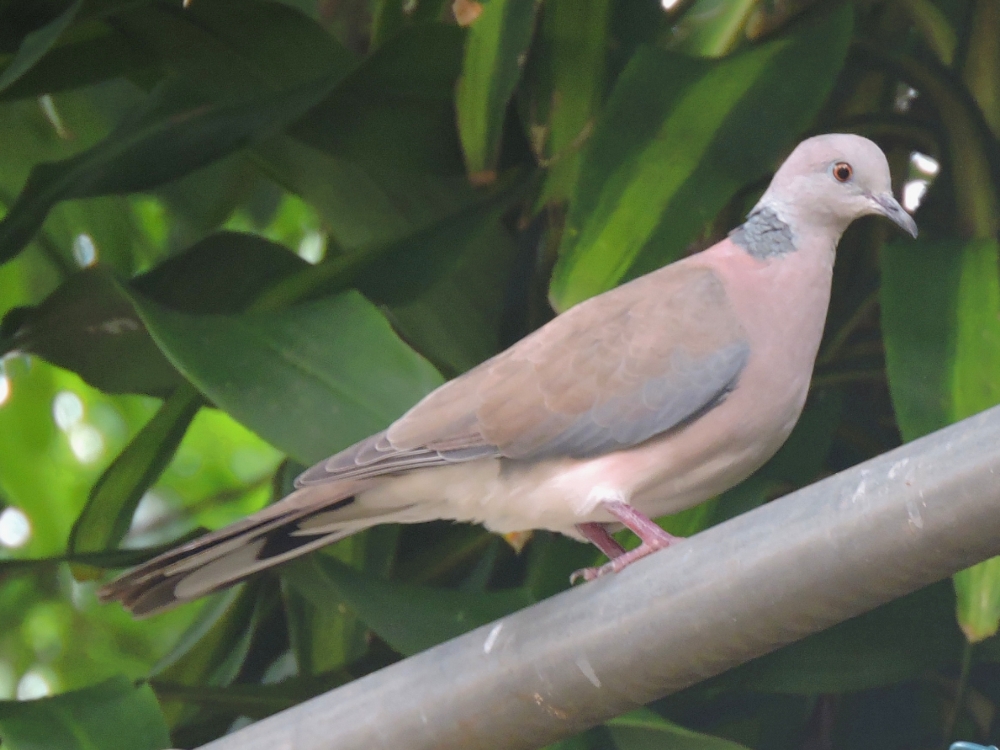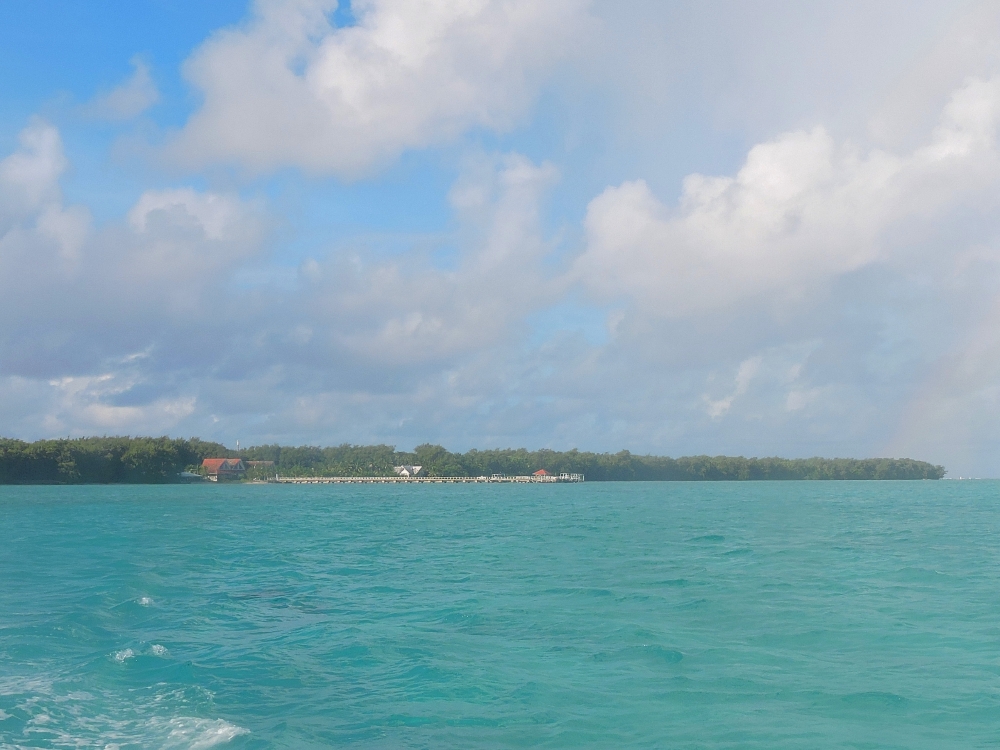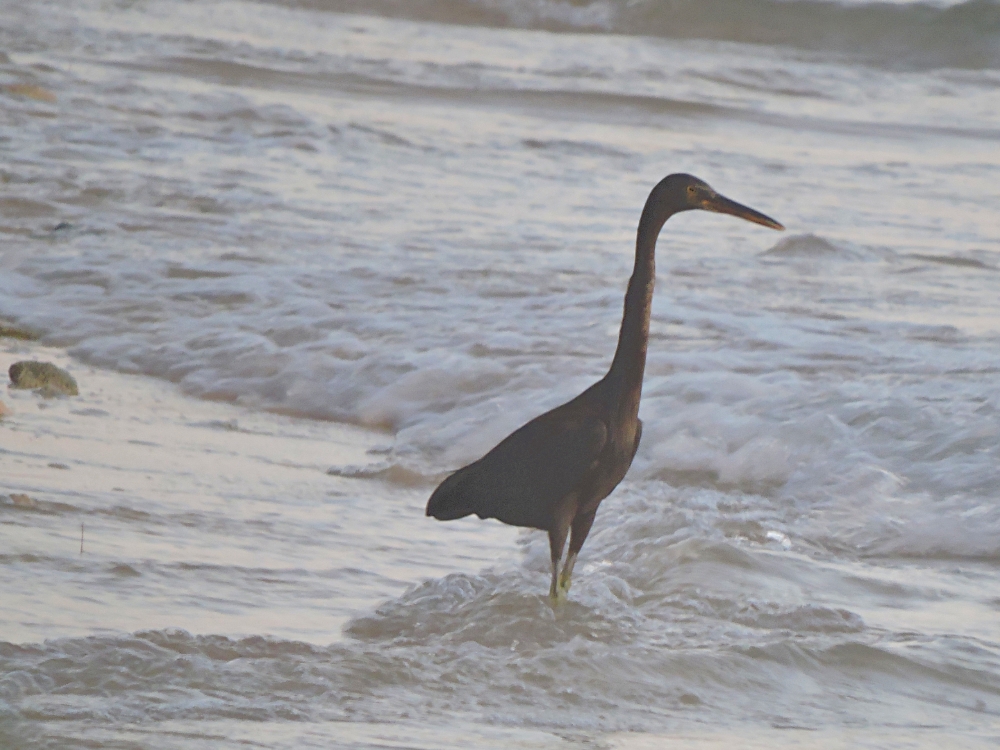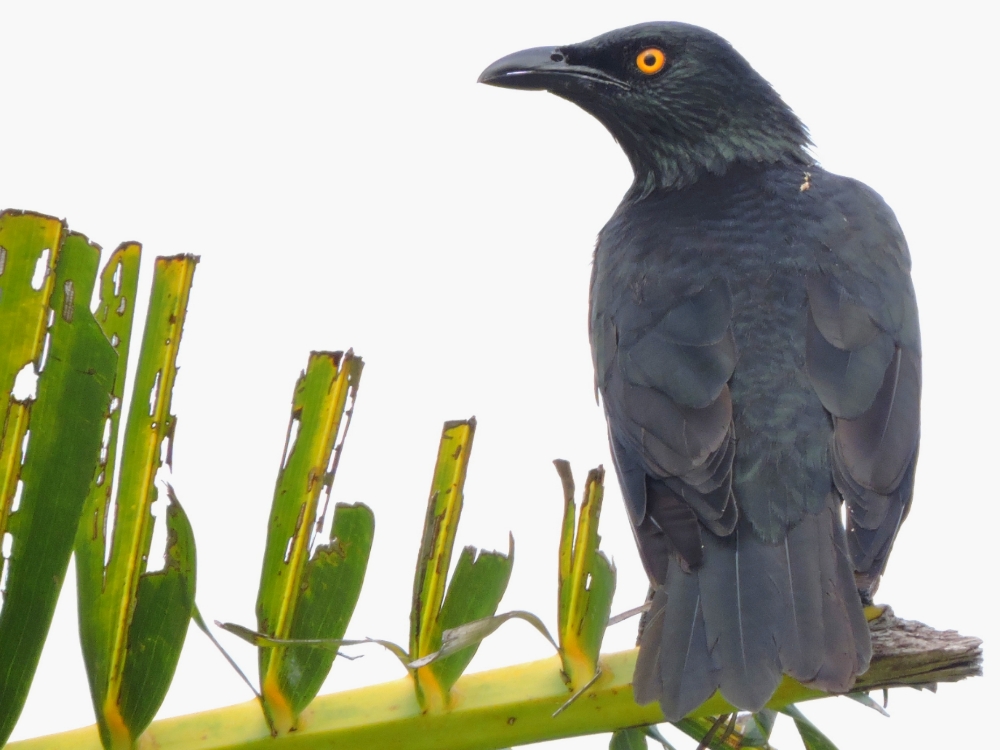When I was in South Korea I knew that I would slowly creep closer to my birding goal of seeing one thousand new species, but also that I had no chance of actually achieving that while I was there. I likewise realized that once I moved on to the next destination a significant amount of patience would then be required since I would have little opportunity for making much progress for a while. As it turned out, a considerably greater level of patience would ultimately be needed, because eventually there were two situations, instead of just one, that meant that I would be spending an unexpectedly long time in a location with few birds, of any kind, available to be seen. Those two factors were completely opposite in cause and character, but were both quite sad, though in very different ways.
The most important and most relevant of those circumstances was straightforward—namely, that I would be spending two weeks on the western Pacific island of Guam. The story of birds on Guam is something that most people should already know about, but it is likely that only those with an interest in ecology and biodiversity are aware of that unfortunate tale. In a similar circumstance to many oceanic islands, biological evolution had previously delivered an impressive collection of distinctive birds that continued to reside on Guam. Depending on the status of continuing taxonomic debates, the number of resident species on Guam was as high as fourteen, some of which were endemic just to Guam proper, with others also being found on a few other nearby islands. In keeping with the original tropical forested environment of the island, several of those were also particularly attractive examples.
Unfortunately, a typically tragic environmental catastrophe began to unfold on Guam during the middle of the twentieth century. That was caused by the introduction of the Brown Tree Snake, a native of Indonesia and Australia, which presumably arrived surreptitiously by way of some type of cargo or passenger transport. Over the next few decades that venomous, nocturnal, arboreal serpent devastated the birdlife of the formerly predator-free island. By the end of the century, due to predation by the snakes combined with a general loss of habitat, only two of the native bird species of Guam had avoided extirpation, and those were both so endangered that they required human intervention to survive and all of the few remaining wild individuals were collected into captive breeding programs.
Today, when one walks around the more natural areas of the island, a disturbing quietness is noticeable, and few birds can be seen. At the coastline pelagic species will occasionally come into view, most commonly White Tern, an impressive species, to be sure, but one that I had seen already. Around the rest of the island only three rather mundane introduced species have managed to gain a foothold; Black Drongo, Eurasian Tree Sparrow, and, the only one of the three that was a new species for me, Philippine Collared Dove. If the only restoration option was bringing in non-native species, it seemed to me that a better collection could have been found, compared to that somewhat motley assemblage.

However, I still had some hope of seeing at least one unique and special species while I was in the area. Borrowing a conservation technique that had been utilized with success on other islands where introduced species had wiped out much of the native birdlife, such as New Zealand, a much smaller islet adjacent to the main island of Guam has be cleared of predators in order to reestablish a formerly native species, specifically the Guam Rail. That flightless bird, an especially easy target for the snakes, was once a common and iconic species on Guam, but for many years has been one of the two species that existed only in captive breeding programs. A very small island, Cocos Island, located just off the southern tip of Guam is now the new home for a group of Guam Rail, with a number of individuals having been released there a few years ago. They seem to be doing well, apparently, and so I wanted to go to the island to try and see one, just before I was scheduled to move on from Guam. That was particularly complicated, however, since the small ferry that normally takes people over to a ramshackle beach club, also located on Cocos, had been suspended for some time due to Covid restrictions. Therefore, the only option for me was to hire a local boat guide to drop me off on the island, where I would spend the night sleeping on the beach, and then get picked up again early the following morning.

After a hot ride down to the bottom of the main island, I found myself on the small, but picturesque Cocos Island around midday, though with some of its land area in private hands, and thoroughly overgrown, I did not have access to the entire site. Moreover, the portions I could walk through did not have an entirely natural feeling, being filled with many traps for snakes, and also iguanas, in order to give the birds a fighting chance. I was not sure whether the birds would be exceedingly shy, like many rails are known to be, or if their flightless nature would make them relatively easy to find, and, after a while, I was beginning to worry that I might have made a wasted effort to see the bird. Two other new species seen that day provided a bit of insurance against such an eventuality, but neither would be as charismatic as the rail. Pacific Reef Heron are widespread around the western Pacific, but this one was my first sighting.

Another widespread species, Micronesian Starling was actually one of Guam’s former native species, but today there are some living on Cocos Island. I am not sure, however, if they are survivors, reintroduced individuals, or if they found their way to Cocos by their own means, but whichever is the case, I was, nevertheless, pleased to add them.

Finally, in the late afternoon I was rewarded when a brown, chicken-sized bird popped out of the bushes onto the trail just ahead, but then disappeared again almost instantaneously. The security guards, who were still there, confirmed to me that there are no other similar birds on the island, so then I had my Guam Rail sighting, unsatisfying though it was. Fortunately, a little while later, another individual slowly walked out onto a sidewalk right in front of me, then stopped for a second or two, giving me a clear view. Just when I almost had my camera raised into position, it frustratingly sauntered forward under a bush, never to be seen again. So I will have to be satisfied with an unphotographed observation of that critically endangered species.
It was the next day that the second circumstance that slowed my bird sighting rate took place. For it was during the ride back up to the populated part of the island that I experienced my unpleasant crash. That event forced me to stay on Guam for an extra nine weeks, a period of time that was totally birdless for me, becoming the longest period of time that had passed without observing any new birds since the Tour began. This, of course, was entirely annoying, considering how close I was to my overall goal. In fact, I now consider the Guam Rail to be my personal Bad Omen
bird.
When the crash happened, I already had an air ticket to travel a short distance to the nearby Commonwealth of the Northern Marianas Islands, where some of Guam’s former native species can still be seen. Had that happened, this post would have been titled, A Tale of Three Islands. However, during my long convalescence, the CNMI had reinstated their quarantine requirements for incoming visitors, so I decided to forgo that stop. Instead I will next be visiting another island nation in the general vicinity. That particular one has a well-deserved reputation for exceptional beauty, which will be nice, and there are also an even greater number of distinctive and beautiful birds waiting to be seen—and no snakes.